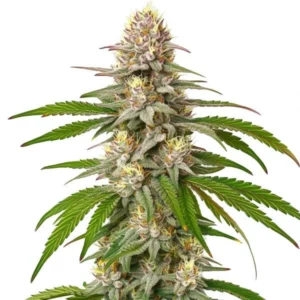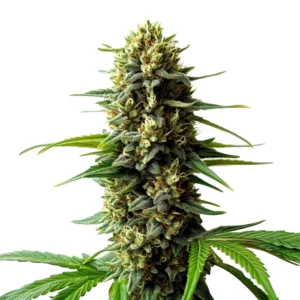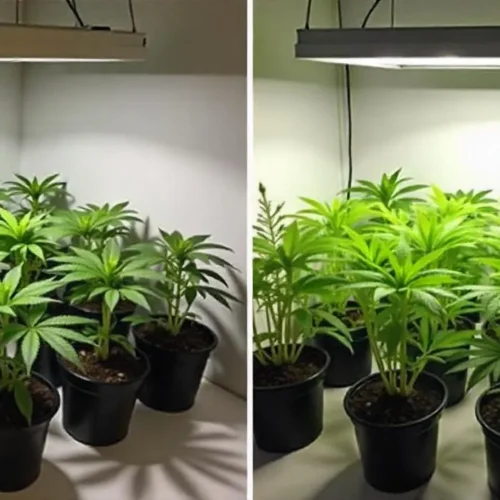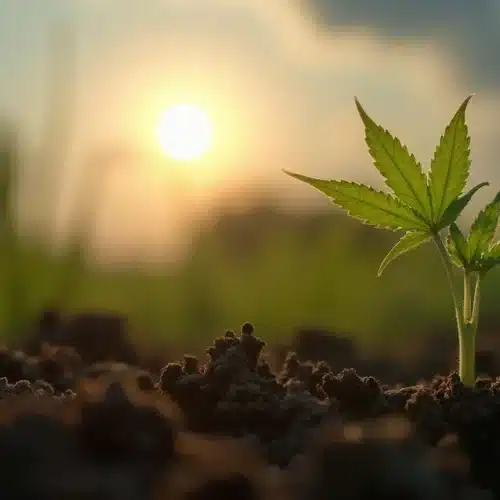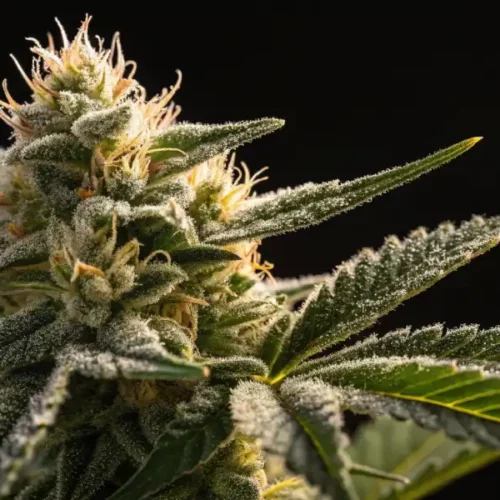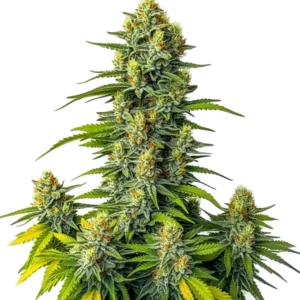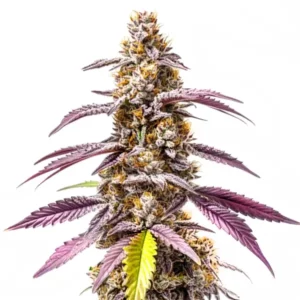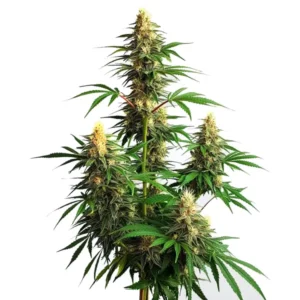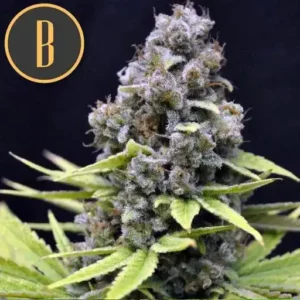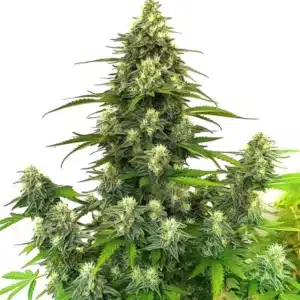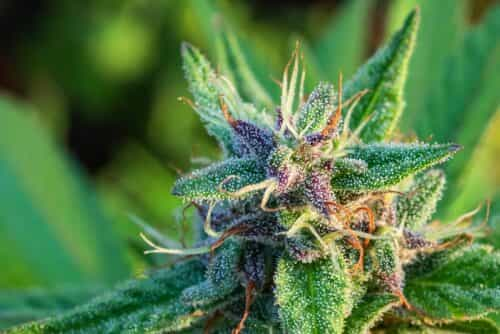Santa Marta Haze Autoflower Cannabis Seed Description
Santa Marta Haze Autoflower is a prized cannabis strain. It boasts unique genetics and performs well indoors and outdoors. This strain blends Sativa dominance from Santa Marta genetics with the ease of autoflowering. It often reaches up to 20% THC. This level gives an energetic, creative high that suits both recreational and medicinal users.
The plants show vibrant colors and dense, resinous buds. They emit a strong aroma that mixes citrus, pine, and sweet notes. Its rich terpene profile boosts its healing power. The strain’s hardiness and adaptability make it a top choice for growers who want high yields without sacrificing quality.
Recommended Strains
Santa Marta Haze Auto
 THC: 20% - 25%
THC: 20% - 25% Type of seed: Autoflowering
Type of seed: Autoflowering Phenotype: Mostly Sativa
Phenotype: Mostly Sativa Day to flower: 10 - 12 weeks
Day to flower: 10 - 12 weeks
Neville Haze Auto
 THC: 18% - 22%
THC: 18% - 22% Type of seed: Autoflowering
Type of seed: Autoflowering Phenotype: Mostly Sativa
Phenotype: Mostly Sativa Day to flower: 10 - 12 weeks
Day to flower: 10 - 12 weeks
Promos & Deals
Environmental Requirements for Growing Santa Marta Haze Autoflower
Santa Marta Haze Autoflower grows best in warm, sunny climates. Indoors, keep temperatures between 68°F and 77°F (20-25°C). Use moderate humidity to lower the risk of mold and pests. Outdoors, ensure the plants get direct sunlight. The strain also handles cooler temperatures better than many non-autoflowers. Its short life cycle even allows for multiple harvests in one season. Stable conditions and careful humidity control help boost growth and yield.
Optimal Conditions for Germination
Germination is the process where seeds awaken from dormancy and begin to sprout. Santa Marta Haze Autoflower seeds require warmth, moisture, and darkness to germinate successfully. The ideal temperature range is between 70°F and 85°F (21°C to 29°C), which can be easily achieved in most indoor environments or with the aid of a heat mat.
Methods for Germination
There are several methods for germinating cannabis seeds, but some are particularly suited to autoflowering varieties like Santa Marta Haze for their simplicity and effectiveness:
Paper Towel Method: This popular method involves placing seeds between moist paper towels and then into a dark, warm place. The paper towels should be kept moist but not waterlogged. Check the seeds daily, and as soon as you see the taproot emerge, they’re ready to be carefully transplanted into their growing medium. This method is favored for its simplicity and the ability to easily monitor the seeds’ progress.
Direct Soil Planting: Planting seeds directly into their final growing medium avoids the stress of transplanting. Plant seeds about a quarter-inch deep in moist, not soggy, soil. Cover lightly with soil or vermiculite and keep in a warm, dark place until sprouts appear. This method mimics the natural germination process and can lead to stronger initial root development.
Starter Cubes and Plugs: These are designed to provide the perfect germination environment. Place the seed inside the pre-made hole of the cube or plug, and keep it moist and warm. Once the seedling emerges and roots start to show through the bottom, the whole cube or plug can be transplanted into the larger growing medium, reducing stress on the plant.
Watering During Germination
Proper moisture is critical during the germination stage. Whether using the paper towel method, starter cubes, or planting directly in soil, ensure the medium around the seed remains consistently moist but not waterlogged. Overwatering can suffocate the seed, while under-watering can halt germination. Using a spray bottle to gently mist the medium can prevent overwatering issues.
Light Requirements Post-Germination
Once seeds have sprouted and seedlings emerge, they’ll need light to continue growing. If you’re germinating seeds indoors, introduce them to a gentle light source, a low-intensity LED or fluorescent grow light. Keep the light on for about 18 hours a day to encourage strong, healthy growth. Seedlings should be kept relatively close to the light source to prevent stretching but far enough away to avoid heat stress or burning.
Transplanting After Germination
With autoflowers like Santa Marta Haze, it’s often recommended to plant the germinated seed directly into its final container to avoid the stress of transplanting, which can impact growth and yield. If you must transplant, do it carefully when the plant has developed a few sets of true leaves and is strong enough to handle the move.
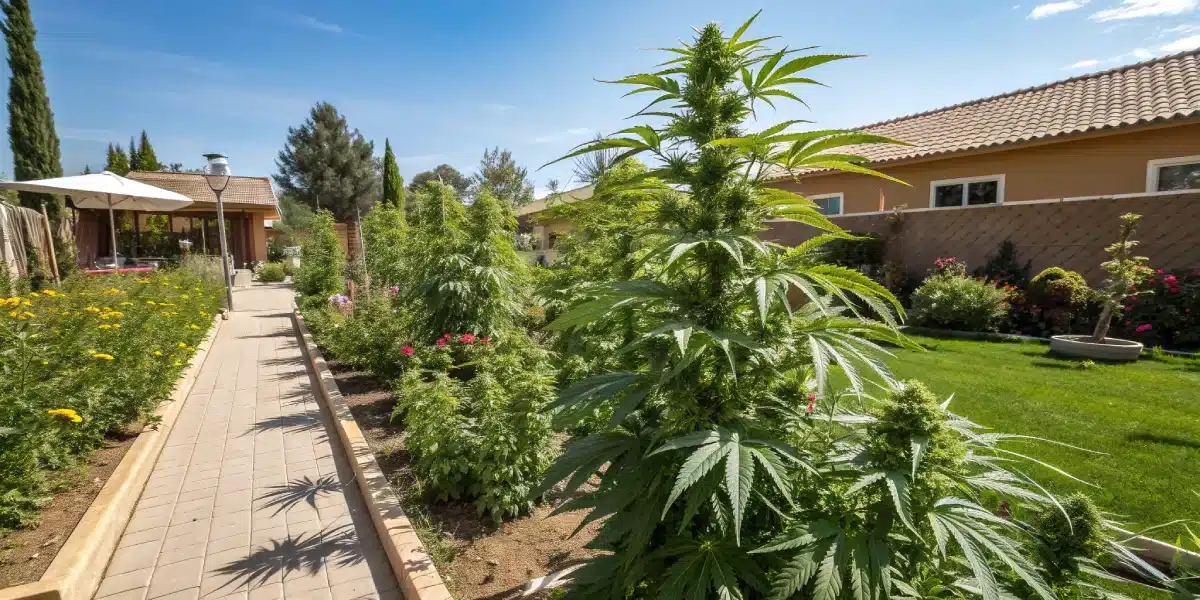
Vegetative Phase of Santa Marta Haze Autoflower Seeds
Despite their fast life cycle, Santa Marta Haze Autoflower plants benefit from attention during the vegetative phase to establish a strong foundation for flowering. Autoflowers typically enter the vegetative stage within two weeks after germination and remain in this phase for a brief period. During this time, maintaining optimal conditions is key to encourage robust growth. Light intensity, nutrient availability, and environmental control are critical factors that influence the overall health and productivity of the plants.
Given the quick transition to flowering, techniques such as low-stress training (LST) can be beneficial if applied early and carefully. LST can enhance light exposure to lower parts of the plant, promoting more even growth and potentially higher yields. However, it’s important to avoid high-stress techniques like topping or fimming, as autoflowers have limited time to recover from such interventions.
Flowering Phase of Santa Marta Haze Autoflower Seeds
The flowering stage is where Santa Marta Haze Autoflower truly shines, with plants developing dense, trichome-covered buds that exude a captivating aroma. Autoflowering strains automatically transition to the flowering phase based on age, typically starting around weeks 3-4 from germination. During this phase, it’s essential to provide a bloom-specific nutrient formula rich in phosphorus and potassium to support bud development.
Environmental control remains crucial, with slightly lower humidity levels (around 40-50%) and temperatures to prevent mold and encourage trichome production. Santa Marta Haze Autoflower’s flowering period is remarkably short, usually completing within 7-9 weeks, allowing for faster harvests compared to photoperiod strains.
Cannabis Fertilization and Nutrition
Nutrition plays a pivotal role in the growth and development of Santa Marta Haze Autoflower. A balanced diet tailored to the plant’s life cycle stages is crucial for optimal performance. During the vegetative phase, a higher nitrogen content supports foliage growth, while the flowering phase demands a shift towards phosphorus and potassium to promote bud formation.
Autoflowers, including Santa Marta Haze, are sensitive to overfeeding. Thus, it’s advisable to start with a more diluted nutrient solution and gradually increase the strength as the plant matures. Monitoring the plant’s response to nutrients and adjusting the feeding schedule accordingly can prevent nutrient burn and ensure a healthy growth trajectory.
Pest And Disease Control for Cannabis Growing
Maintaining a proactive approach to pest and disease management is essential for safeguarding your Santa Marta Haze Autoflower crop. Regular inspections can help detect early signs of infestation or disease, enabling timely intervention. Natural predators and organic pesticides can offer effective control without compromising the quality of the cannabis.
Good hygiene practices, such as cleaning tools and controlling humidity, play a significant role in preventing outbreaks. In the event of an infestation, identifying the specific pest or disease and applying targeted treatments can help minimize impact and protect your plants.
Harvesting and Curing for Cannabis Growing
Harvesting at the right time is crucial to capture the full potential of Santa Marta Haze Autoflower’s aromatic profile and potency. Observing the trichome color and pistil maturity can provide insights into the optimal harvest window. Once harvested, proper drying and curing are paramount to enhance the flavor, aroma, and overall quality of the buds.
After drying, buds should be placed in airtight containers and stored in a cool, dark place. Regularly opening the containers to allow for air exchange and monitoring humidity will ensure a successful cure, improving the smoothness and depth of the final product.
Santa Marta Haze Autoflower: Sativa Dominance
Santa Marta Haze Autoflower blends traits from both Indica and Sativa. It gives a relaxing body high along with an uplifting mental effect. This balance makes it perfect for daytime or evening use. Its versatility attracts a wide range of users who seek both creative energy and calm relaxation.
Advantages of Growing Santa Marta Haze Autoflower Cannabis Seeds
Growing Santa Marta Haze Autoflower cannabis seeds presents a multitude of benefits that cater to a wide array of growers, from the novices embarking on their first cultivation journey to the seasoned veterans looking for a reliable and efficient crop. Here’s a deeper dive into the advantages of choosing this strain for your garden:
Rapid Growth Cycle
Santa Marta Haze Autoflower seeds are renowned for their swift progression from germination to harvest. This characteristic is especially advantageous for cultivators seeking to maximize their output through multiple cycles within a single season. The autoflowering nature accelerates the growth process, allowing for harvests in as little as 8-10 weeks. This rapid turnover not only enables more frequent harvests but also offers a practical solution for growers in regions with shorter growing seasons, ensuring a successful yield before the onset of adverse weather conditions.
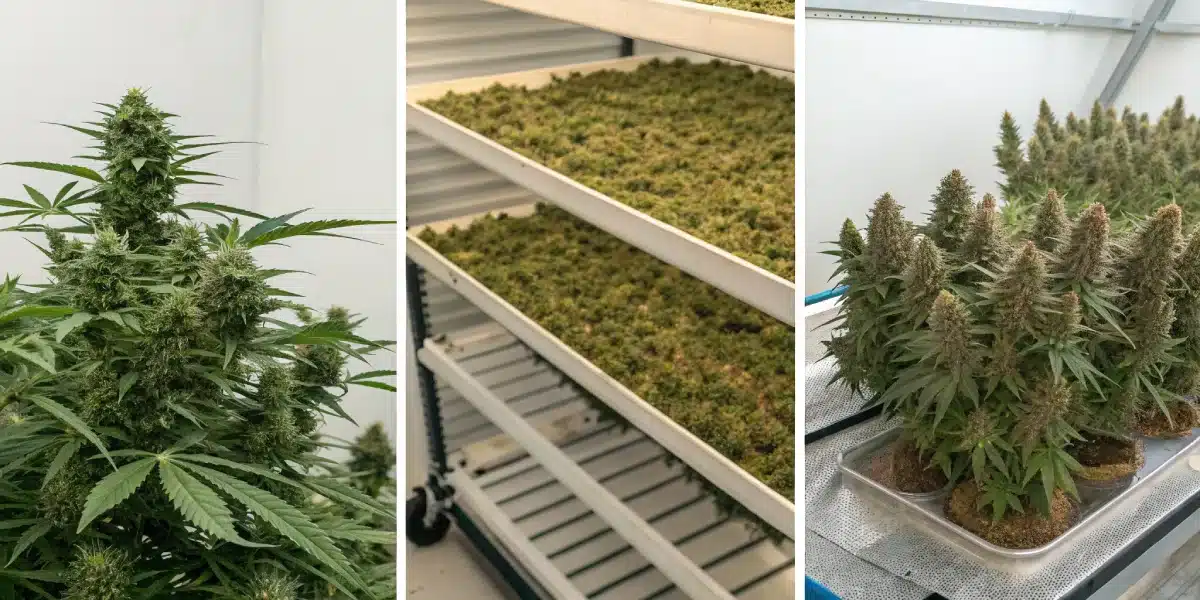
FAQs about Santa Marta Haze Autoflower
What makes Santa Marta Haze Autoflower unique?
Santa Marta Haze Autoflower stands out with its robust, uplifting effects and a distinctive spicy, citrus aroma. Its auto-flowering genetics deliver a rapid growth cycle and consistent performance. This strain produces dense, resinous buds, offering both potent effects and an appealing flavor profile for a well-rounded experience.
What are the ideal growing conditions?
For optimal growth, cultivate Santa Marta Haze Autoflower indoors with daytime temperatures between 70°F and 80°F. Maintain humidity levels at 40–50% during flowering and use full-spectrum lighting. Adequate ventilation and careful nutrient management are essential to promote vigorous growth and ensure the production of high-quality, resin-rich buds.
How long is the flowering stage?
Santa Marta Haze Autoflower typically enters the flowering stage for about 8 to 10 weeks. During this period, the buds mature and develop a dense resin coating. Regular monitoring of trichome color is crucial to determine the ideal harvest time, which ensures the strain reaches its peak potency and flavor.
What nutrient regimen is recommended?
Use a balanced nutrient program tailored to the plant’s growth stage. Begin with a nitrogen-rich fertilizer during the vegetative phase, then transition to a phosphorus and potassium blend during flowering to boost bud development and resin production. Regular pH checks and proper flushing before harvest help maintain optimal nutrient uptake.
What challenges might growers face?
Growers may encounter challenges such as nutrient sensitivity, temperature fluctuations, and occasional pest issues. Overfeeding or abrupt environmental changes can stress the plants. Therefore, close monitoring and proactive management, including integrated pest control.





